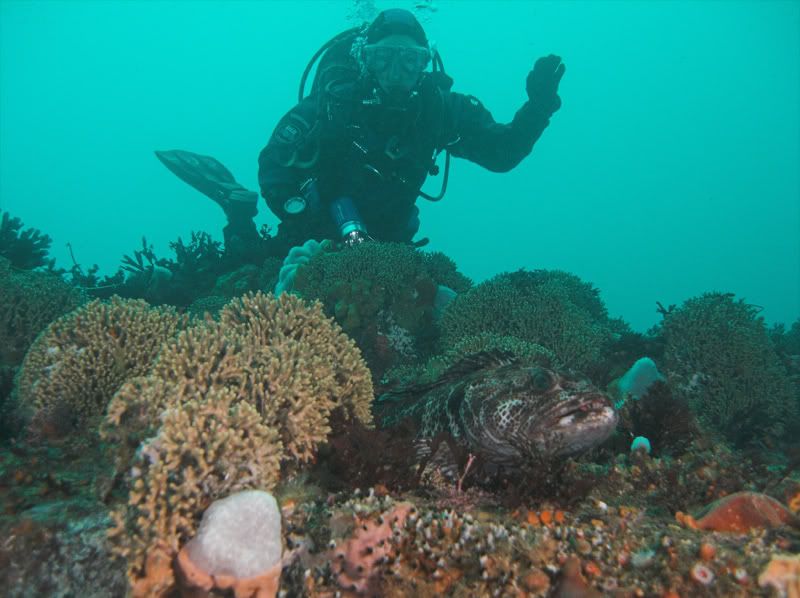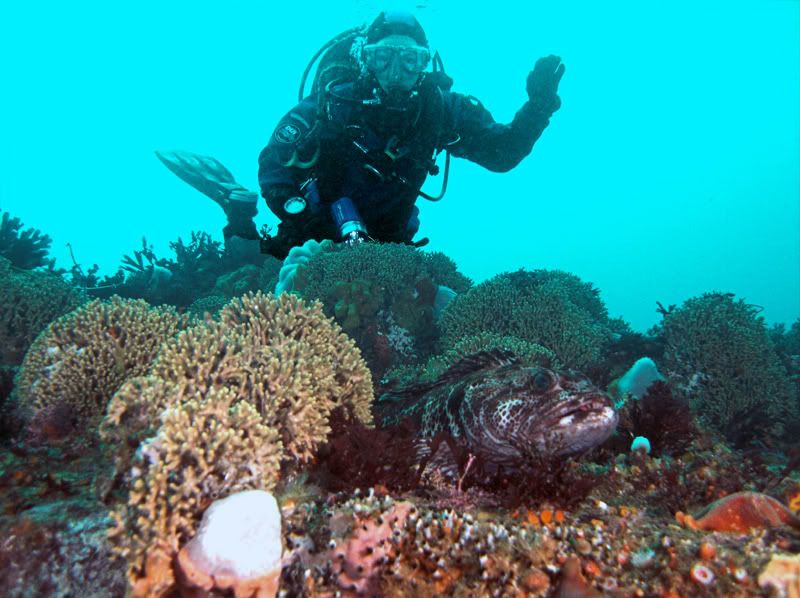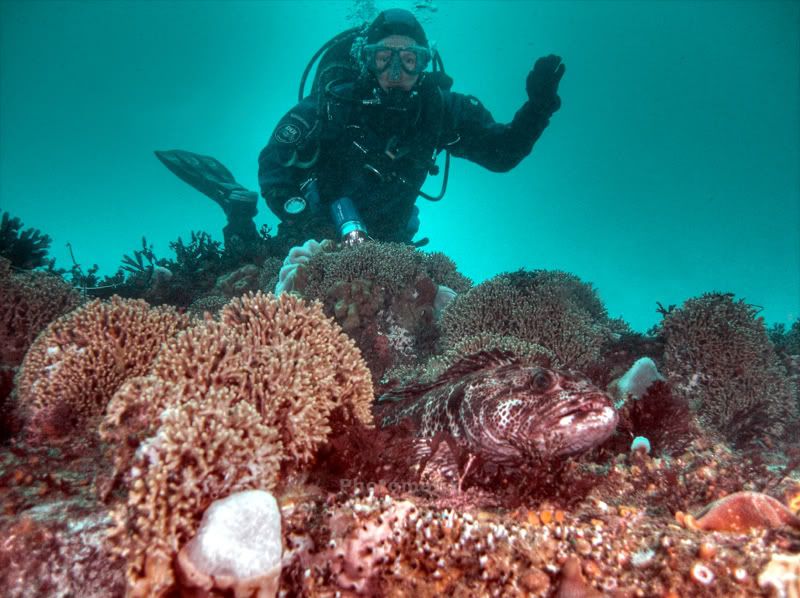I finally got my wife and permanent dive buddy to pose for me behind a scene! I had a beautiful Lingcod in a bed of Staghorn Bryozoan, on top of a rock, and spotted Carol behind the rock. I carefully motioned her to pose behind the scene and reset my camera for a wide shot. Unfortunately, I hadn't changed those settings since Utila and shot at 1/125. My dream shot was way underexposed.
This was the best I could do in Rawshooter. By no means horrible, but certainly not a great picture. One subject underexposed, the other green and faded in the background.

I thought about how to fix it, figuring I'd certainly play with it in PS7, but it would be difficult to get right. Here's what I came up with in Photoshop by isolating the diver and correcting the lighting separately.

My final thought was, OK I haven't played with Photomatrix yet since I downloaded it. What if I make several conversions with different lighting and white balance. I brightened up one as much as I could. I did one with normal settings and the fish too dark. Lastly, I did one with the white balance set in the background on the diver's gauge. The foreground was bright red. I combined the three in Photomatrix, then did some color adjustments in PS7 to get make it a little more "normal". This was what I came up with.

What do you think?
This was the best I could do in Rawshooter. By no means horrible, but certainly not a great picture. One subject underexposed, the other green and faded in the background.

I thought about how to fix it, figuring I'd certainly play with it in PS7, but it would be difficult to get right. Here's what I came up with in Photoshop by isolating the diver and correcting the lighting separately.

My final thought was, OK I haven't played with Photomatrix yet since I downloaded it. What if I make several conversions with different lighting and white balance. I brightened up one as much as I could. I did one with normal settings and the fish too dark. Lastly, I did one with the white balance set in the background on the diver's gauge. The foreground was bright red. I combined the three in Photomatrix, then did some color adjustments in PS7 to get make it a little more "normal". This was what I came up with.

What do you think?





